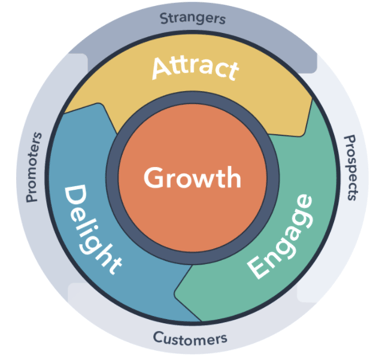Product/Market Fit is an important factor in your business’s success
The process of achieving the right product/market fit can be tricky, considering there are various steps that go into attaining it.
From day one, new businesses should keep their eyes open on their chosen market. It will allow their business to stay tuned to any upcoming trends and focus on the ever-changing needs and desires of their customers. What you want to do is create a situation where your consumer base consistently chooses your products and then pays for your product repeatedly.
It is crucial to avoid certain mistakes to ensure that your team develops a high-quality product that successfully attracts your intended audience.
Unfortunately, many entrepreneurs make common mistakes that could be prevented during their process of attaining a good product/market fit.
Making these mistakes could have different consequences, from investing time and money to losing credibility along the way to finding your product/market fit.
It is important to avoid them; it takes determination and discipline to make sure you avoid making these mistakes.
Mistakes businesses make when striving for a Product/Market Fit
There are several mistakes common among entrepreneurs who strive to find the ideal market fit for their next product.
While these errors can be avoided, many new businesses and junior entrepreneurs are unaware of them.
Continue reading to learn what not to do and some actionable advice for more success in finding the best market for your product.
Mistake #1: Trying to solve a problem no one has
When asked to give his insight on product/market fit, Paul Graham, Co-Founder of Y Combinator, gave the following:
“Probably the biggest cause of failure is not making something people want. The biggest reason people do that is that they don’t pay enough attention to users.”
The truth is, just because you have experienced a specific problem does not mean that other users in similar circumstances will experience it, too. Even if they do, nothing guarantees that they will see this as a significant issue.
Actionable advice: If you have a great idea for a new product, always make sure that the pain point(s) it aims to solve are worth solving.
The last thing you want is to invest your time and money on something that will solve an un-existing problem, offer products not suitable for its designated market, do not sell, or receive less than stellar press reviews.

Mistake #2: Not hiring a good product team
If you are a business owner with the vision of launching quality products that improve your customer’s lives, do not forget you need a team of qualified professionals to help you design your products.
Your product team should have at least some experience creating products that have proven successful in their markets. Nowhere does this ring truer than in the manufacturing and technology industries where consumers seek out top-quality products that can solve technical pain points.
The common mistake founders make to overlook their product team’s prior experience and knowledge – they either seek out individuals who share their vision, but lack experience, or they want to do everything themselves.
This mindset is not conducive to their future business success and can lead to problems like a poor product/market fit or poor market timing when launching their product.
Actionable advice: As a business founder, do not be afraid to create a product team of professionals who not only share your vision but can help enhance it.
Even if you invest a bit more upfront, once you launch a quality product into its ideal market and top it off with an excellent marketing and sales strategy, your customers will want to get their hands on your product as swiftly as possible.
Mistake #3: Confusing Product/Market Fit and Problem/Solution Fit as the same thing
It is vital to know the difference between product/market fit and problem/solution fit when determining your business’s customer base.
For an optimum product/market fit, organizations should measure consumers’ need and desire for the product or service they offer, and not for the solution their product offers.
When a business misinterprets its consumers’ need for a solution as a desire for their product or service, their product/market fit will likely result in a false positive.
Actionable advice: Avoid falling in this trap! When validating your product and its applicability in a specific market, gather evidence that backs up consumers’ need and desire for it.
Please do not jump to the conclusion that an audience with a pain point to solve will automatically accept a product that promises to resolve it. Quite often, consumers need substantial evidence to back up a business’s claims.
Mistake #4: Believing That once you have a Product/Market Fit, you will always have it
Achieving a product/market fit for your latest product in development is no easy task. The process can be a long and grueling one or short, and to the point – your team will have a different experience for every product it develops.
A mistake some businesses make is assuming finding a good market for their product will be easy. They feel sure about the problem(s) their item solves, their customers’ needs, and the market’s overall demand.
Actionable advice: Do not fall for this fairy tale version of product/market fit. Honing in on the right market and the ideal version of your product will require many iterations of testing, updates, and adjustments. Not to mention that markets and their audiences can and will change over time.
Mistake #5: Thinking you have a Product/Market Fit because you have customers
Many business owners assume that once they have achieved a product/market fit with their latest good and have acquired several paying customers, they do not have to worry about it anymore.
While this is a step in the right direction, it does not mean the product has found its ideal market.
You do not want just any customers; you want qualified consumers who will share how great your product is and recommend it to others. You want to delight your customers.

Actionable advice: Avoid this issue by being strategic – determine your customer base down to the T before launching your product. This way, you will know the customers you get from day one are likely qualified consumers who will continuously purchase your product in the future.
Your team should spend some time identifying your ideal customer base by using market segmentation; breakdown the market you aim to satisfy based on consumers’ needs, wants, and behaviors. Once you have done this, make sure you divide your target consumer(s) even further using buyer personas.
Mistake #6: Promoting your product instead of educating your audience
You cannot validate your product idea until enough qualified consumers have purchased it. For this reason, your marketing and sales strategy are essential factors that determine how successful your product will be.
Therefore, do not make your marketing message about your product. Consumers are not interested in what you are selling; they are interested in how your product can help them.
Actionable advice: Put your customers first. Educate them on your industry’s or market’s problems and address how these can be solved with your product.
Even if your business is in the process of validating the product/market fit of a specific product, make sure your marketing strategy also focuses on educating your customer base.
Consider starting a business blog, a small video series, or an eBook that educates your chosen audience on the usability and functionality of your products.

Mistakes can be avoided
Finding a good product/market fit is hard enough. Designing a product requires studying your target audience in-depth, identifying your customers’ needs, and validating your product in the market – not to mention lots of testing.
Keep your team’s energy and focus on the tasks to accomplish. By avoiding the most common mistakes, you will ensure your business’s journey toward an excellent product/market fit for a specific product is less troublesome.




